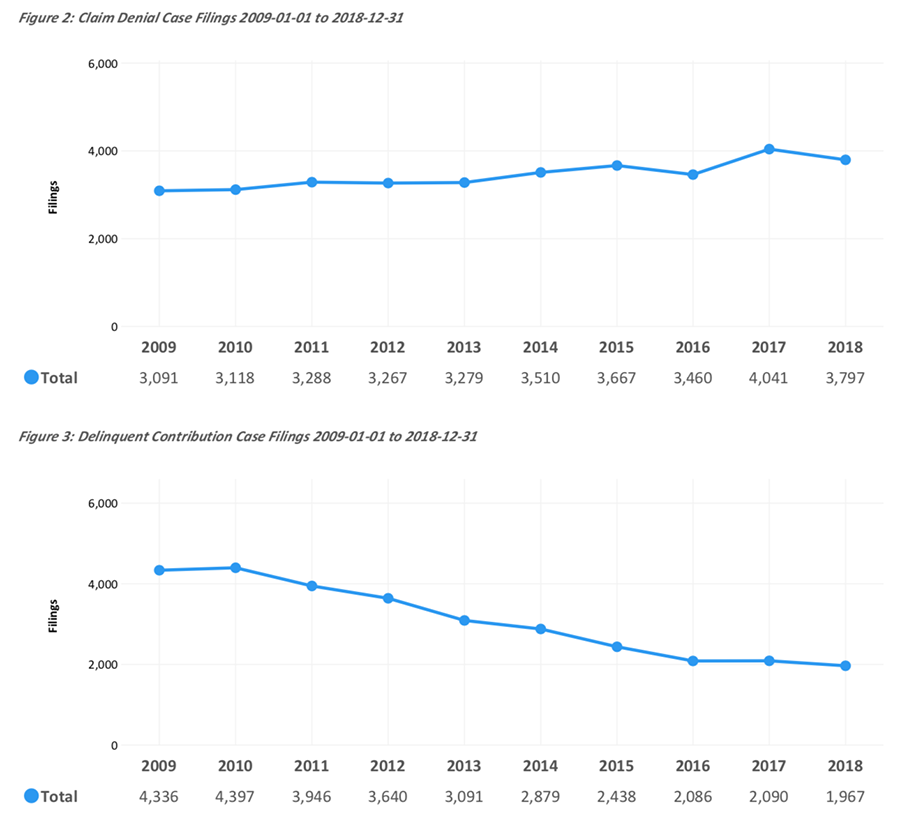Lex Machina is excited to release its first ERISA Litigation Report. This report highlights data-driven trends and insights to help practitioners quickly analyze and strategize in this particular area of the law. The report focuses on the three-year time period from January 1, 2016 to December 31, 2018 to showcase recent trends in U.S. District Court. Additionally, this report focuses on Claim Denial and Delinquent Contribution claims.
Highlights include:
- ERISA case filings declined from nearly 9,000 cases to about 6,600 cases from 2010 to 2018, a 26% drop. Delinquent contribution case filings have seen a significant decline from nearly 4,400 cases in 2010 to over 1,900 cases in 2018. On the other hand, claim denial case filings have risen over the same period, peaking at more than 4,000 filings in 2017, up from just over 3,000 filings in 2010.
- Northern District of Illinois had the most case filings during the 2016-2018 period (1698 cases), likely due to its strong union presence and large population. The next most-active districts were the Central District of California (1053 cases) and the District of New Jersey (1030).
- The top four most active ERISA judges in the US came from the District of South Carolina, due to the large number of life insurance companies in that state as well as a specialized ERISA case management structure.
- In claim denial cases, healthcare companies were the most active plaintiffs, while insurance companies were the most active defendants. In delinquent contribution cases, plaintiffs were mostly pension funds, while defendants tended to be construction companies or insurance companies.
- Courts awarded over $1 billion in approved class action settlement damages in 2016 to 2018. The next largest damages award type was ERISA plan benefits (more than $670 million), followed by liquidated damages (more than $80 million).

Greg Brumfield, Legal Data Expert at Lex Machina, and Amanda Amert, Chair of Jenner & Block’s ERISA Litigation Practice, co-hosted a webcast on May 30, 2019 to review the highlights and findings of the report. To view a recording of the webcast, click here.
To request a copy of the report, please click here.